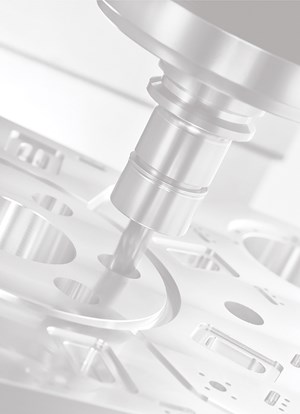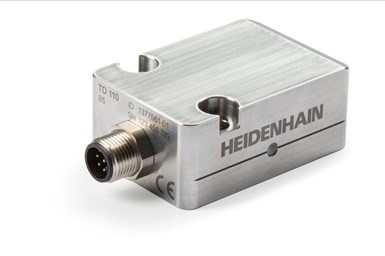Heidenhain Introduces In-Process Gage to Check Tools
The TD 110 tool breakage detector can determine whether a tool is broken off by more than 2 mm as it passes within a machine tool.
Share



Heidenhain Corporation introduces the new TD 110 tool breakage detector, designed to quickly sense tool breakage during use within a machine tool. Providing contact-free inspection of drill bits and end mills, it can reportedly determine whether a tool is broken off by more than 2 mm as it passes within a machine tool.
The TD 110 tool breakage sensor can be placed in the work envelope so that it is fast and easy to reach during the tool change. The inductive sensor can detect tools as they pass by while they are spinning at their operational speed. Due to its rapid scanning technology, even very small tools made of HSS steel and carbide are detected.
The breakage sensor can then generate either a floating or an HTL switching signal and the machine control can evaluate it via standard instruction sets. These signals/outputs can be used to connect to a Heidenhain TNC control or a PLC or to any other IOs of nearly every CNC control manufacturer. In addition, an LED signals whether a tool has been flagged.
Benefits of the Heidenhain’s TD 110 tool breakage detector include a maintenance-free sensor for reducing non-productive time for breakage inspection, and it is tolerant of cooling lubricant and lightly contaminated tools. It is said to be universally retrofittable due to standard interfaces for tool touch probes.
Related Content
-
Using Automation to Reduce COGS and Stay Globally Competitive
Decade-long, multiphase automation investments lower operating costs and maintain technology lead in an increasingly competitive global market.
-
5 Tool Setting Techniques
Each tool setting technique has merit, and it depends on where you are as a shop and the type of work you do, as cost and efficiency all come into play.
-
Chuck Jaws Achieve 77% Weight Reduction Through 3D Printing
Alpha Precision Group (APG) has developed an innovative workholding design for faster spindle speeds through sinter-based additive manufacturing.














 (1).png;maxWidth=300;quality=90)


.png;maxWidth=300;quality=90)


